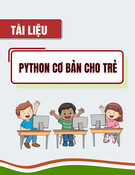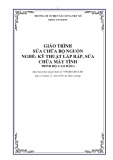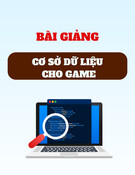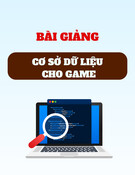
04/09/2024
Variables and Datatypes
Faculty of Information Technology, Hanoi University
2
What You Are About To Achieve
By the end of this lecture, we are going to:
Understand the process of declaring, initializing, and assigning values to
variables.
Explore the various numeric data types and their uses.
Apply coding conventions to maintain readability and consistency in code.
Utilize operators effectively in expressions and calculations.
Perform numeric type conversions.
Identify common errors and pitfalls.
Outline the software development process.

04/09/2024
3
Variable
Numeric Datatypes
Coding Conventions
Operators
Numeric Type Conversions
Software Development Process
Common Errors and Pitfalls
Final Touches
4
Variables
In our previous lecture, we wrote some basic programs to perform tasks like
population projection and solving algebraic equations.
However, as you might have
noticed, these programs had
several limitations.

04/09/2024
5
Variables
For example, we had to manually enter
the population values or equation directly
into the code. This approach is not flexible
- it requires us to change the code each
time we want to use different data.
6
Variables
The long and complex expressions made the
code harder to read and understand. Also, the
code was quite repetitive. We had to write
similar lines of code over and over again, which
isn't efficient or easy to maintain.

04/09/2024
To overcome these challenges,
we'll dive into elementary
programming concepts, including
primitive data types, variables,
constants, operators, expressions,
and input/output handling.
8
Variables
The algorithm for calculating the area of a circle can be described as follows:
1. Read in the circle’s radius.
2. Compute the area using the following formula:
area = radius * radius * p
3. Display the result.
Let’s first consider the simple problem of
computing the area of a circle. How do we
write a program for solving this problem?

04/09/2024
9
Variables
You already know that every Java program begins with a class definition in which the
keyword class is followed by the class name. Assume that you have chosen ComputeArea
as the class name. The outline of the program would look like this:
Look at step 1, the program needs to read
the radius entered by the user from the
keyboard. This raises two important issues:
Reading the radius.
Storing the radius in the program.
10
Variables
Let’s address the second issue first. In order to store the radius, the program needs to declare a
symbol called a variable. A variable represents a value stored in the computer’s memory.
Rather than using xand yas variable names, please choose descriptive names: in this case,
radius for radius, and area for area. To let the compiler know what radius and area are, just
specify their data types. That is the kind of data stored in a variable, whether integer, real
number, or something else. This is known as declaring variables. Java provides simple data
types for representing integers, real numbers, characters, and Boolean types. These types are
known as primitive data types or fundamental types.
















![Đề thi cuối học kì 2 môn Cấu trúc dữ liệu và giải thuật [kèm đáp án/mới nhất]](https://cdn.tailieu.vn/images/document/thumbnail/2025/20251014/lakim0906/135x160/89711760416179.jpg)


![Tài liệu Nhập môn Học máy và Khai phá Dữ liệu [chuẩn nhất]](https://cdn.tailieu.vn/images/document/thumbnail/2025/20251001/kimphuong1001/135x160/531759303870.jpg)






